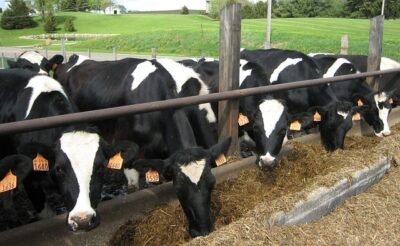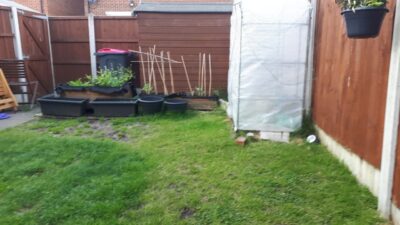Cultivating Success With Crop Rotation
In this Article...
A Beginner's Guide to Crop Rotation
Welcome to the world of crop rotation, where the key to a thriving and productive garden lies in the strategic dance of plant placement. Whether you’re an enthusiastic novice or an experienced gardener looking to enhance your gardening techniques, understanding the principles of crop rotation is a game-changer. In this beginner’s guide, we will explore the what, why, and how of crop rotation, equipping you with the knowledge to cultivate a flourishing garden. So grab your gardening gloves and let’s dive into the wonderful world of crop rotation!
What is Crop Rotation?
Crop rotation is an ancient agricultural practice that involves systematically changing the planting locations of crops over successive growing seasons. It revolves around the concept of diversifying plant families or types within different sections of your garden. By rotating crops, you can unlock a multitude of benefits that contribute to soil health, pest control, weed management, and overall garden productivity.
The Benefits of Crop Rotation
Soil Health and Fertility: Crop rotation is a natural way to maintain and enhance soil health. Different plants have varying nutrient requirements and contribute differently to soil structure. By rotating crops, you prevent the depletion of specific nutrients and reduce the risk of pest and disease buildup associated with continuous planting of the same crops. This practice enhances soil fertility, improves nutrient availability, and promotes overall soil balance, ensuring optimal conditions for plant growth.
Pest and Disease Control: Crop rotation disrupts the life cycles of pests and diseases, reducing their impact on your garden. Certain pests and diseases have specific host plants they target. By changing the location of crops each year, you break the cycle, making it harder for pests and diseases to establish and spread. This natural form of pest control helps minimise the use of chemical pesticides, creating a healthier garden environment.
Weed Suppression: Proper crop rotation can help suppress weed growth in your garden. Different crops exhibit different growth habits and canopy structures. By alternating crops, you can effectively shade the soil, limiting weed growth and competition. Additionally, some crops release chemicals that inhibit weed germination and growth. By harnessing the power of crop rotation, you can reduce weed infestations and the time spent battling unwanted vegetation.
Nutrient Optimization: Each plant has specific nutrient requirements and abilities to extract nutrients from the soil. Crop rotation allows for better nutrient utilisation and reduces the risk of nutrient imbalances. By rotating crops with different nutrient demands, you can optimise nutrient uptake, minimise deficiencies, and maximise yields. This ensures that your plants have access to the right nutrients at the right time, resulting in healthier, more vigorous growth.
Planning Your Crop Rotation
Assess Your Garden: Begin by assessing the size, layout, and specific conditions of your garden. Identify different sections or beds where you can implement your crop rotation plan.
Group Crops: Classify crops based on their plant families, nutrient requirements, and growth characteristics. Grouping similar crops together allows for easier planning and ensures that crops with similar needs are not grown in the same location year after year.
Design Your Rotation Cycle: Create a rotation cycle that spans several years. This cycle should include different categories of crops, such as leafy greens, root crops, legumes, and fruits. The goal is to avoid planting crops from the same category in the same section or bed consecutively.
Consider Fallow Periods and Cover Crops: Integrate fallow periods or cover crops into your rotation plan. Fallow periods involve leaving a section or bed unplanted for a season to allow the soil to rest and regenerate. Alternatively, you can sow cover crops, such as legumes or grasses, during fallow periods to improve soil fertility, prevent erosion, and suppress weeds.
Document and Adapt: Keep a garden journal to record your rotation plan, observations, and outcomes. Monitor plant health, pest incidences, weed growth, and soil conditions throughout the seasons. This information will help you refine your rotation plan over time and tailor it to the unique needs of your garden.
Common Crop Rotation Systems
While there is no one-size-fits-all approach to crop rotation, several popular systems have proven successful:
Three-Field Rotation: A traditional system that divides the garden into three sections. The first section grows cereals, the second section legumes, and the third section fallow or cover crops. The sections rotate each year, creating a balanced nutrient cycle.
Four-Year Rotation: A more comprehensive approach that divides the garden into four sections. Each section is dedicated to a specific crop group (e.g., root vegetables, brassicas, legumes, and leafy greens). The crops rotate in a predetermined order, ensuring optimal nutrient management and pest control.
Intercropping: This method involves growing different crops simultaneously in close proximity. The crops complement each other, either through their growth habits or pest-repellent properties, maximising space utilisation and providing additional benefits such as enhanced pest control or increased biodiversity.
Crop rotation is an ongoing learning process, and it’s important to remain flexible and adapt to the specific needs of your garden. Factors like soil composition, microclimates, and plant preferences may influence your rotation plan. Be observant, take note of your garden’s response to different crops and locations, and make adjustments accordingly. By incorporating this ancient technique into your gardening practices, you will reap the rewards of improved soil health, enhanced pest control, weed suppression, and optimised nutrient utilisation. Remember, crop rotation is a dynamic process that evolves over time. With careful planning, observation, and adaptation, your garden will thrive and offer you bountiful harvests. Happy rotating and happy gardening!



